The 1878 $3 Gold Coin: A Gem from the Industrial Revolution
Posted on — Leave a commentIn 1878, the United States of America was in the midst of a major transformation from an agricultural society to an industrialized society—ushering in the Industrial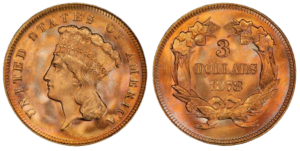 Revolution. Collectors who own a coin from this period connect tangibly to this historical time when America emerged as an industrial giant and major economic power on the global stage.
Revolution. Collectors who own a coin from this period connect tangibly to this historical time when America emerged as an industrial giant and major economic power on the global stage.
The rapid construction of railroads opened up new parts of our nation for people to live and work and ushered in significant economic growth. Manufacturing and new inventions developed quickly, leading to the expansion of city living and urbanization.
During this period, the U.S. Mint in Philadelphia produced $3 gold pieces known as the Indian Princess Head. Many people are not even aware there was a three-dollar gold piece. It is a hidden gem in gold numismatics indeed. The Indian Princess Head $3 gold coin was minted from 1854 through 1889
If you are wondering why the U.S. Mint chose to produce a $3 coin, you aren’t alone. It is an odd number after all. Numismatic experts believe the reason can be found at the post office. When this coin was first minted a U.S. postal stamp cost 3 cents. The $3 coin created a convenient way for businesses to purchase 100 stamps in a single transaction!
The handsome design of this coin is memorable for anyone who has ever seen it in person or held it in their hand. Many consider the $3 Indian Princess one of the most beautiful gold coins struck in the 19th century. See the rich frosty luster and sparkling patina that comes with this 147-year-old masterpiece here.
James B. Longacre, the U.S. Mint’s chief engraver, designed the coin. Longacre was, for the first time, given the freedom to create a design of his own imagination. Previously, he had been instructed to rely on Roman or Greek features in U.S. coins. For the $3 gold coin, Longacre was determined to create something uniquely American.
Longacre chose to highlight an American “Indian Princess” on the obverse. A lustrous orange-gold color, the coin shows a lovely Indian Princess adorned with a feathered headdress, with the words UNITED STATES OF AMERICA circling her. On the reverse, the date and denomination are surrounded by an agricultural wreath celebrating corn, tobacco, cotton, and wheat.
Minted in Philadelphia of 90% gold and 10% copper, the total mintage came in at 82,304 coins. Survival estimates for all grades total 25,000, yet for grades 60 or better only 6,000.
In recent years, collector interest in three-dollar gold pieces has surged. Are you Interested in building a set? One idea is to aim to collect a four-mint set, which would include from each of the U.S. Mint facilities that struck the $3 gold coin: Philadelphia, Dahlonega, New Orleans, and San Francisco. You could start today with this 1878 $3 gold coin MS65 struck in Philadelphia. See it here.
Gold Revaluation Ideas Jump from Fringe to Mainstream
Posted on — Leave a commentThe idea of gold revaluation has been on the perimeter of the gold community for decades. But, recent comments from U.S. Treasury Secretary Scott Bessent who said “We’re going to monetize the asset side of the U.S. balance sheet” moved the idea of valuing gold at current market price into the mainstream in a hurry.
a hurry.
What is gold revaluation?
Currently, the U.S. Treasury’s gold reserves are valued at about $11 billion—but that’s based on a legacy Bretton Woods gold price of $42.22 per ounce. The gold valuation price on the books is dramatically less than the current price of gold around $2,900 an ounce.
A revaluation would simply involve marking the price of U.S. government gold to the market price of around $2,900 an ounce (or whatever price the government decides).
With the simple push of an accounting pen, a revaluation to current market prices would instantly increase the value of the Treasury’s gold reserves to about $750 billion. The Treasury would essentially record on the books its unrealized gains of American government gold assets.
What could revaluation mean for the gold market?
This would instantly create a floor underneath the price of gold – in effect bringing us back toward a type of gold standard. A revaluation would also reinforce gold’s role in the global financial system – elevating it on equal standing of fiat currency.
What could this mean for the U.S. debt?
One of the benefits of gold revaluation for politicians is that it would instantly add money into the U.S. financial system without having to issue new Treasury bills, notes or bonds. This could be considered another form of quantitative easing and it would dramatically increase the size of the U.S. balance sheet.
For politicians struggling over the deficit and the upcoming debt ceiling challenge that means the Treasury has more money to pay the government’s bills – as the revaluation would in a sense – create new money out of thin air.
Bottom line? This would allow the U.S. Treasury to spend hundreds of billions of dollars without an increase to the national debt. Some on Wall Street warn this could be an inflationary move in and of itself. But, for gold investors that would continue to support rising trend in gold prices not only in the short-term, but over the medium and long-run as well.
Want to read more? Subscribe to the Blanchard Newsletter and get our tales from the vault, our favorite stories from around the world, and the latest tangible assets news delivered to your inbox weekly.
CPI Inflation Jumps, Eggs Prices up 15.2%. Gold Hits New Record Near $3,000
Posted on — Leave a commentSpace enthusiasts will recall astronaut Jack Swigert’s famous message to NASA after an oxygen tank explosion rocked Apollo 13 while traveling to the moon in 1970:
“Houston, we have a problem.”
The same can be said for the Federal Reserve in 2025—when inflation moved in the wrong direction—jumping 0.5% to 3.0% in January, its biggest gain since August 2023.
August 2023.
The Federal Reserve has an inflation problem that won’t go away.
And, while egg prices soared 15.2% last month, the inflation jump isn’t just from eggs. Price increases on shelter, gasoline, and food (including meats, dairy, and fish) and higher used car and truck prices contributed to a broad rise in American consumer goods prices. Prescription medication and car insurance also saw big price jumps last month.
What’s more, these consumer price increases were recorded before the impact of any of President Trump’s new tariffs took effect. That means, there could be more jumps in inflation in the months ahead.
Markets react.
Stocks slumped on the news. Gold climbed to another record high. The precious metal has marched steadily higher since the beginning of the year and is already logging an impressive 11.2% gain as gold approaches the $3,000 an-ounce level. Silver is up 13% since the start of the year.
The surprise 3.0% CPI reading has many on Wall Street rethinking interest rate cuts this year. Many say Federal Reserve rate cuts have now moved to the back burner.
Bottom line?
Inflationary pressures are bubbling hot. Tariff policy could worsen the outlook in the months ahead. Investors should brace for higher volatility in the equity markets and the inflation trend will keep a strong bid under the gold market.
Gold has a rock-solid track record as a store of wealth and is an enduring form of money recognized in every country on the planet. Before stocks tumble more, have you considered rebalancing your portfolio and increasing your allocation to gold? Once stocks start crashing, it will be too late to get your money back.
Want to read more? Subscribe to the Blanchard Newsletter and get our tales from the vault, our favorite stories from around the world, and the latest tangible assets news delivered to your inbox weekly.
Will Elon Musk’s DOGE Get Rid of the Penny?
Posted on — Leave a commentPresident Donald Trump signed an executive order on January 20, 2025 to establish DOGE: the Department of Government Efficiency, led by Elon Musk, with a goal to cut spending.
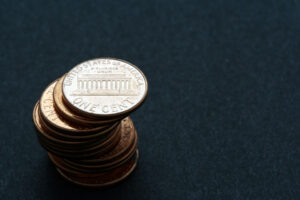
A number of programs, from diversity, equity, and inclusion (DEI) to Daylight Saving Time to the venerable one-cent piece—yes, the penny—are on the potential chopping block.
In an X post, DOGE wrote that it costs more than 3 cents to make a penny, which cost taxpayers over $179 million through 2023.
It’s true. The cost to make a penny jumped to 3.69 cents, according to the 2024 U.S. Mint annual report. That marks the 19th consecutive year that penny production costs have “remained above face value.” In 2024, the U.S. produced about 3.23 billion new pennies, according to the U.S. Mint. Pennies were the most produced coin in both 2023 and 2024.
In an increasingly cashless world, could Elon Musk be right? Is it time to ditch the penny? Cash usage has been declining due to the prevalence of credit cards, and debit cards, and the rise of mobile payment apps.
But, Americans still carry cash and use it. Forty-four percent of Americans say they use cash for some of their purchases, while 14% say they use it for all their purchases, according to a Pew Research Center study.
3 reasons DOGE may not be able to get rid of the penny
- To make change. For those Americans who do pay in cash, the penny is an essential tool to make change. How would you make change for an $11.97 purchase if you pay with a $20 bill without the penny?
- Getting rid of the penny could make things more expensive. Canada did away with its penny in the early 2010s—and now purchases there are rounded to the nearest nickel. For example, a $11.83 purchase becomes $11.85 in Canada now.
- Congress oversees our money. According to the U.S. Constitution, it is Congress (not DOGE) that is responsible for overseeing our money and coinage.
How much could the U.S. save if it got rid of the penny? Stopping production of the 1-cent piece could save taxpayers up to $100 million annually, according to a 2022 Federal Reserve report. Whether or not DOGE takes action to discontinue it, collectors will always prize and covet many special American 1-cent pieces. Halting future production of the penny could increase numismatic demand for existing rare pennies. Check out Blanchard’s current inventory of small cents here.
Want to read more? Subscribe to the Blanchard Newsletter and get our tales from the vault, our favorite stories from around the world, and the latest tangible assets news delivered to your inbox weekly.
Fed Hits Pause Button on Rate Cuts. Gold Starts January Strong
Posted on — Leave a commentJust nine days after President Trump was sworn in as our nation’s new president, the Federal Reserve held interest rates steady at 4.25- 4.50%. Inflation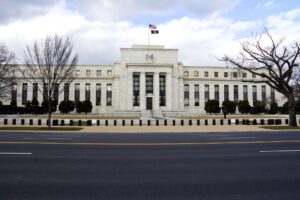 remains above the Centrals bank’s target and there is widespread uncertainty on how the new administration’s policies will impact the economy and financial markets.
remains above the Centrals bank’s target and there is widespread uncertainty on how the new administration’s policies will impact the economy and financial markets.
This uncertainty likely played into the Fed’s decision to stand pat. Today’s decision from the Fed comes after three consecutive interest rate cuts in 2024.
For now, Fed chairman Jerome Powell side-stepped President Trump’s demand that the central bank lower interest rates, which the president announced to global business leaders last week at the World Economic Forum in Davos, Switzerland.
Gold Hits 3 Month High in Late January
In the markets, gold came out of the starting gates in January, trading virtually straight up from the $2,628 area in late December to above the $2,775 level in late January, marking a three-month high for the precious metal. The stock market plunged this week on worries of overvalued technology stocks. This triggered concerns that the AI-fueled stock market bubble could be ready to pop.
Inflation Remains above the Fed’s 2% Target
Economic data released since the December Fed meeting reveals that economic growth appears to be expanding at a strong 3% pace and the labor market remains solid, but progress on moving inflation back down to the Fed’s 3% target has stalled.
Looking back, consumer prices increased 2.9% in 2024, an improvement from 4.1% in 2023. However, progress bringing inflation back to its target at 2.0% has run into challenges as American’s are now concerned that tariffs could raise the price on imported goods.
Wall Street gets its next look at inflation on Friday, when the government releases the January personal consumption expenditures price index (PCE), which is widely known as the Fed’s preferred inflation gauge.
Batten down the hatches with gold
The new year is setting up to be a volatile one for the stock market, while the outlook for gold is glittering. After gaining almost 30% last year, January’s strong start for gold signals another big year for the precious metal, with analysts widely targeting the $3,000 an ounce level as the next big upside target.
If you haven’t already, now is the optimal time to increase your allocation to gold to hedge your portfolio against losses in the stock market. If the stock market plunges, your portfolio invested in equities shrinks, while the portion of your portfolio invested in gold grows. Questions? Blanchard is here to help.
Want to read more? Subscribe to the Blanchard Newsletter and get our tales from the vault, our favorite stories from around the world, and the latest tangible assets news delivered to your inbox weekly.
Gold Shines as Stocks Plunge on Worries about Chinese AI Tool
Posted on — Leave a commentGold is shining—trading just below its record high—as the U.S. stock market tumbles amid concerns that a Chinese artificial intelligence company may provide cheaper and better technology than American tech firms.

Stocks tumbled in overseas trading to start the week and at the New York open, Nvidia crashed nearly 13%, wiping out over $400 billion in market value. In early action, the S&P 500 fell over 1.54%, the Nasdaq tumbled over 2.56% and gold is trading above $2,700 an ounce—not far from its all-time record high.
What you need to know about Chinese AI company: DeepSeek
A small Chinese start-up company called DeepSeek, founded in July 2023, launched a free AI tool that jumped to the top download in the Apple store, just seven days after its release. DeepSeek needs only a fraction of the data compared to U.S. tools to make it run and cost significantly less.
DeepSeek’s AI tool has upended Wall Street because of its low development costs—just over $5 million. By comparison, U.S. technology firms have routinely spent over $100 million to develop similar AI tools.
Is this a Sputnik moment?
The release of DeepSeek’s artificial intelligence tool has been likened to the “Sputnik moment” when the Russians first released a satellite into space in 1957. The United States confronted fears that there could be a technological gap between America and the Soviet Union.
Today, DeepSeek signals that U.S. technology firms, which are on track to invest over $1 trillion in AI over the coming years according to Goldman Sachs, may be behind in the AI race. The Chinese have seemingly discovered a way to produce similar or better results with lower-quality chips and significantly lower start-up costs.
What does this mean for U.S. stocks?
DeepSeek’s successful AI release raises questions over whether investors have overvalued U.S. technology stocks like Nvidia, Oracle, Meta, and Microsoft, which have been fueling the broader stock market’s advance. Some on Wall Street are warning this is the tipping point for the AI-fueled stock market bubble, and more significant losses could lie ahead—like the dot.com crash back in 2001.
How gold can protect your wealth
After two impressive years of gains, gold has cemented its position as an essential tool for portfolio diversification and risk management. Traditionally viewed as a safe-haven asset, gold provides investors the opportunity to protect, preserve, and grow their wealth even during periods of severe stock market volatility or downturn.
Gold has a proven track record of decoupling from stocks and climbing significantly when the stock market crashes. The unique characteristic of gold allows investors to hedge their portfolio against major bear market declines in the stock market and still grow their wealth during periods of crisis.
Whether or not DeepSeek turns out to be the pin that pricks the AI-stock market bubble, investors who own up to 10-15% of gold in their portfolios report better long-term returns with lower drawdowns.
If the stock market plunges, your portfolio invested in equities shrinks, while the portion of your portfolio invested in gold grows. Gold has a proven track record as insurance for your wealth. Take action today to ensure you keep more of the wealth you’ve worked hard to earn with an increased allocation to physical gold.
Want to read more? Subscribe to the Blanchard Newsletter and get our tales from the vault, our favorite stories from around the world, and the latest tangible assets news delivered to your inbox weekly.
Blame it on the Night Shift: The 1955 Lincoln Double Die Penny
Posted on — Leave a commentThe 1955 Double Die Lincoln penny is easily the most famous double die coin in U.S. numismatic history. How did this dramatic error come about? Blame it on the night shift.
In the fall of 1955, there was a severe shortage of pennies in America. So, the Philadelphia Mint took extreme measures and struck coins for 24 hours a day, in two 12-hour shifts to help alleviate the penny shortage.
What Exactly Is A Double Die?
A double die error coin is produced during the die making process. Back in the 1950’s, in order to create a die, it required multiple impressions from a working hub to create the detail. If the hub or die shifted during this process, the final die would show two distinct impressions with separation between them.
That’s what happened for the highly prized 1955 Double Die Lincoln Cent. The doubling is seen on every coin that was produced from that specific die.
What makes the 1955 Double Die Lincoln Cent so intriguing to collectors is that the doubling on the obverse is clearly seen by the naked eye. If you ever get your hands on one of these treasures, just take a look and you will see that the date 1955 and the motto LIBERTY and IN GOD WE TRUST appear doubled. The coin’s reverse was made correctly and does not show any doubling.
Before a die was supposed to be used in production, no less than seven employees of the U.S. Mint were expected to review and approve the die. That clearly didn’t happen. And, the imperfect die was placed in the rotation for the midnight to 8 am shift.
Let Them Circulate!
By morning, it was estimated that anywhere from 20,000 to 24,000 of these Double Die Lincoln pennies were struck. The problem? These double die Lincoln pennies were mixed in with millions of other properly produced Lincoln cents produced on the overnight shift.
The Chief Coiner of the Philadelphia Mint, Sydney C. Engel, had to decide between letting the double die pennies go into circulation, or melt down about 10 million pennies. He decided to let the error coins circulate!
In the months that followed, 1955 Double Die Lincoln pennies began to pop up, especially in Boston, western Massachusetts and upstate New York. The majority of the Lincoln Double Die pennies were discovered in cigarette packs as change. Back then, vending machines were not able to dispense change like they can today. The vending machines only accepted quarters.
Since the pack of cigarettes cost 23 cents, two pennies were slipped inside the cellophane packaging of the cigarette pack to serve as the change to the customer.
An Exciting Piece of Numismatic History
Today, the 1955 Double Die Lincoln Cent is one of the most sought after coins in all of numismatics. Even though as many as 24,000 of these dramatic error coins were struck, survival estimates for grade 60 or better total a mere 1,200. You can see it here.
Want to read more? Subscribe to the Blanchard Newsletter and get our tales from the vault, our favorite stories from around the world and the latest tangible assets news delivered to your inbox weekly.
How to Sell Your Gold and Silver to Blanchard & Company
Posted on — Leave a commentSelling gold and silver to Blanchard & Company is secure, simple, and straightforward. Whether you are selling bullion, investment-grade coins, or rare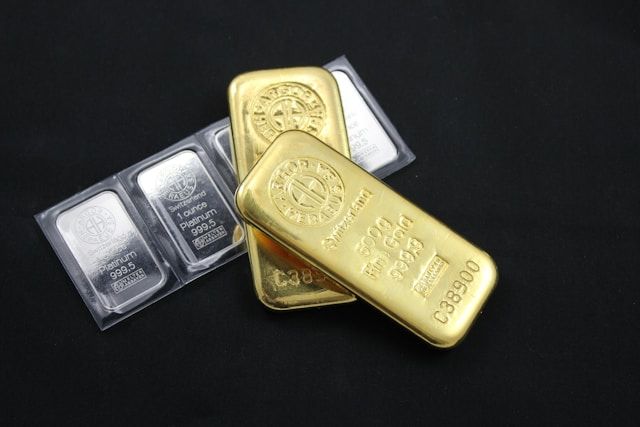 numismatic items, following the proper steps ensures a smooth process and fair market pricing.
numismatic items, following the proper steps ensures a smooth process and fair market pricing.
Q: How Can I Sell My Gold and Silver?
A: Initiating the Sale
You can start by contacting Blanchard & Company at 1-800-880-4653 to receive a current bid price for your gold or silver holdings. After receiving a quote, you will be guided through the process of securely shipping your items to Blanchard for inspection and processing.
Q: What Types of Gold and Silver Does Blanchard Purchase?
A: Bullion and Rare Coins
Blanchard purchases both bullion and rare coins:
Bullion: Includes investment-grade gold and silver coins, bars, and rounds.
Rare Coins: Must be graded and slabbed (sealed in a plastic case) by professional grading services such as the Professional Coin Grading Service (PCGS), Certified Acceptance Corporation Grading(CACG) or the Numismatic Guaranty Corporation (NGC).
Q: What Is the Process for Selling Rare Coins?
A: Expert Evaluation
For rare coins, Blanchard’s numismatic experts assess each item based on the open market. This process may take up to 48 hours to return an evaluation. Note that this evaluation represents an indication of market value, not a formal offer. Only coins graded and slabbed by PCGS, CACG, or NGC are considered for purchase.
Q: How Should I Ship My Gold and Silver to Blanchard?
A: Shipping Instructions
To ensure your items arrive safely, follow these steps:
Prepare a note listing your name, address, phone number, and a description of the items. Include a copy inside the box. Add padding such as crumpled newspaper to prevent movement during shipping. Securely close the box with tape, covering all edges, corners, and seams.
Label the box with the following address:
Blanchard and Company
P.O. Box 61740
New Orleans, LA 70161-1740
Send the package via Registered and Insured U.S. Mail. Contact Blanchard to notify them that your shipment is on its way.
Q: What Happens After Blanchard Receives My Items?
A: Inspection and Payment
Once received, each coin or bullion item is inspected to confirm its grade and condition. After verification, your portfolio manager completes the buyback paperwork. A check for the agreed-upon amount is then sent via regular U.S. Mail.
Q: Does Blanchard Offer a Buyback Guarantee?
A: Guaranteed Buyback
Yes. Blanchard & Company offers a buyback guarantee on tangible assets purchased from them. This means you can sell back any tangible asset you bought from Blanchard at the current market bid price at any time.
Selling your gold and silver with Blanchard & Company is designed to be secure, reliable, and convenient. By following these steps, you can ensure your items are properly evaluated and that you receive fair market value for your holdings.
Peace Dollar Symbolizes America’s Hope for Lasting Peace After WWI
Posted on — Leave a commentPresident Woodrow Wilson famously described World War I as the war to end all wars.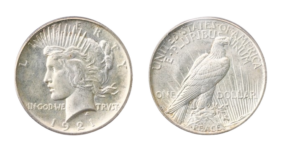
After a bloody four-year conflict, from 1914-1918, in which over 8 million soldiers and sailors died, the Allied Forces and the Germans signed an armistice ending World War I on November 11, 1918.
After the war ended, the American numismatic community advocated for an official coin to celebrate the peace. Soon after, a design competition for the new coin was announced. A 34-year old Italian sculptor named Anthony de Francisci won the honor of designing this important coin.
The coin’s design elements were carefully chosen to represent peace, harmony and optimism and are treasured by collectors everywhere today as a tribute to WWI and the restoration of peacetime that followed.
The inspirational Peace dollar features a portrait of Miss Liberty facing left with a serene expression on her face, with flowing hair and a radiating crown. The word LIBERTY encircles her crown, and IN GOD WE TRUST and the date lie below. The image represented Americans desire to look ahead.
The reverse of the silver Peace Dollar features a bald eagle, resting on a rock, clutching an olive branch above the word “PEACE.” Rays of sunlight brighten the background. This was one of two designs considered, with the first being a more aggressive representation of the eagle, holding a broken sword. Ultimately, the sword remained but was place beneath the eagle. However, the response to the broken sword was swift and loud. “A sword is broken when its owner has disgraced himself. It is broken when a battle is lost and breaking is the alternative to surrendering. A sword is broken when the man who wears it can no longer render allegiance to his sovereign. But America has not broken its sword. It has not been cashiered or beaten; it has not lost allegiance to itself. The blade is bright and keen and wholly dependable.”
The silver Peace Dollar minted between 1921 and 1935 represents one of the most celebrated and lasting designs in numismatics. It’s calming beauty and its symbolic message along with its unique status as our country’s last circulating silver dollar make it a highly sought after coin series among collectors.
The Peace dollar was issued under the terms of the Pittman Act. That act required the U.S. Mint to strike millions of silver dollars, which began in 1921 initially using the Morgan dollar design. Treasury Secretary Andrew Mellon approved the Peace dollar in December 1921.
While just over one million 1921 $1 High Relief Peace dollars were minted in Philadelphia, the majority met their fate in the melting pot. The high relief was deemed impractical for coinage and was quickly modified to “low relief” in 1922.
Today, the first-year 1921 is one of the scarcest Peace dollars in both circulated and mint state condition. This coin is considered a very important one-year-only silver type coin.
The Peace Dollar series also boasts some intrigue notably around the 1964-D Peace Dollar. U.S. Mint records show that 316,076 silver Peace dollars were struck at the Denver Mint in May of 1965 (though they were backdated to 1964).
At the time, a massive silver shortage meant these Peace dollars were significantly more valuable for their silver content than their $1 face value. Indeed before these coins were even released to the public, private collectors were advertising offers of $7.50 each to buy the coins!
The government was concerned about the potential for public hoarding and the silver Peace dollar program was cancelled. What about those 1964-D Peace Dollars? They were never released to the public and condemned to the melting pot.
What’s more, today, it is illegal to possess a 1964-dated Peace dollar! So do any still exist today? According the official story, at the time, all but two of the 1964 Peace Dollars were melted down for their silver content. The two survivors were reportedly sent to Washington, D.C., where they remained until 1970 when Mint records say they too were melted in the presence of a destruction committee.
However, within the numismatic community there are stories.
It was said that every Denver Mint employee received two coins each. But even if a 1964 Peace Dollar were found today, it would be illegal to own since the coin was never officially monetized.
Today the Peace Dollar is a tangible piece of American history that represents America’s desire for healing and renewal after the Great War. The Peace Dollar has become a powerful and enduring symbol of America’s post-war spirit and America’s desire for lasting peace. Curious? We have just one example of a certified 1921 MS-64 Peace dollar, see it here.
Want to read more? Subscribe to the Blanchard Newsletter and get our tales from the vault, our favorite stories from around the world and the latest tangible assets news delivered to your inbox weekly.
Gold Jumps to A Four Week High After December Jobs Report
Posted on — Leave a commentU.S. stocks plunged and gold climbed to a four-week high after a blow-out December jobs report on January 10. The Dow sank nearly 700 points as investors fled the equity markets following news that the U.S. economy added 256,000 new jobs in December, far outpacing estimates of around 165,000 jobs.
Investors once again turned to the safety of gold as expectations the Federal Reserve will not reduce interest rates as much as previously expected took the wind out of the stock market’s sails.
Overall, investors dumped stocks amid concerns that the job market would add more inflation to the economy at a time when the Fed has failed to get prices under control. The December jobs report reinforced expectations that the central bank will keep interest rates unchanged when it meets next at the Jan. 28-20 meeting. The markets are pricing in a 94% chance that the Fed holds rates steady when it meets in late January, according to the CME Fedwatch Tool.
The unexpected strength in the jobs report spooked stocks on a couple of fronts and reveals how the equity market is on weak footing. Stock investors are worried both about inflation and that higher interest rates are here to stay for longer, which weighs on stocks.
Stock investors may want to prepare for increased stock volatility in the weeks and months ahead as the Fed has fewer reasons to cut interest rates this year.
Meanwhile, gold is flexing its strength and racing out of the starting gates in 2025 trading near $2,700 an ounce, following the precious metals’ stunning 26% gain last year. Gold settled at their highest level in four weeks in the week ending January 10, despite gains in the U.S. dollar and Treasury yields.
The great gold rally of 2024 is continuing at full speed ahead as worries about the U.S. fiscal situation continue to support inflows into safe-haven, tangible assets like precious metals. With the U.S. debt levels climbing to $36.3 trillion and as a percentage of our gross domestic product is nearly 125%. Worries about the rising debt and the potential for a debt crisis are resulting in higher Treasury yields as bond investors demand higher returns relative to the risk that government bonds represent.
In today’s uncertain world, gold continues to tower among other asset classes in terms of safety and security. Gold ownership provides peace of mind as it allows you to preserve, protect and grow your wealth just it has for the past 5,000 years.
Want to read more? Subscribe to the Blanchard Newsletter and get our tales from the vault, our favorite stories from around the world and the latest tangible assets news delivered to your inbox weekly.








